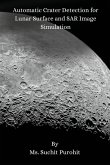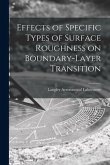The conventional method to design an interplanetary trajectory is by using patched conic technique in two-body problem. It mainly consists of two impulses namely, trans-planetary injection (VTPI) to send the spacecraft from an Earth Parking Orbit (EPO) into heliocentric trajectory towards the destination planet, and Planetary Orbit Insertion (VPOI) to put the spacecraft from a heliocentric trajectory to an orbit around the destination planet. Low-energy transfers are non-conventional methods for interplanetary transfers, and are associated with low-energy with respect to the given major body. Weak Stability Boundary (WSB) transfers, belong to the category of low-energy transfers which take advantage of WSB regions where gravitational attractions of the influencing bodies tend to balance each other, to reduce VPOI (to almost zero in case of lunar transfers). The benefits of using WSB transfer over the conventional transfers are less fuel requirement, more flexibility in arrival orbits, extended launch periods and relaxed operational timeline (Parker and Anderson, 2013). WSB transfer has a major disadvantage of long flight duration. WSB transfer to Moon was first discovered by Belbruno for the Lunar Get-a-Way Special (LGAS) spacecraft which was proposed to use electric propulsion to reach Moon and search for water at its polar regions (Belbruno, 1987). The spacecrafts thrusters were too weak to perform a conventional capture manoeuvre at Moon, so Belbruno proposed an alternative trajectory which would slowly spiral out from Earth, coast to the WSB region so that the spacecraft would be captured into an orbit around Moon. Then it would use its thrusters to spiral down to the final orbit at Moon. WSB is described by Belbruno and Miller (1993) as "a generalization of Lagrange points and a complicated region surrounding the Moon"; Belbruno (2004) as "a region in phase space supporting a special type of chaotic motion for special choices of elliptic initial conditions with respect to m2"; Yagasaki (2004) as "a transition region between the gravitational capture and escape from the Moon in the phase space".
Hinweis: Dieser Artikel kann nur an eine deutsche Lieferadresse ausgeliefert werden.
Hinweis: Dieser Artikel kann nur an eine deutsche Lieferadresse ausgeliefert werden.







